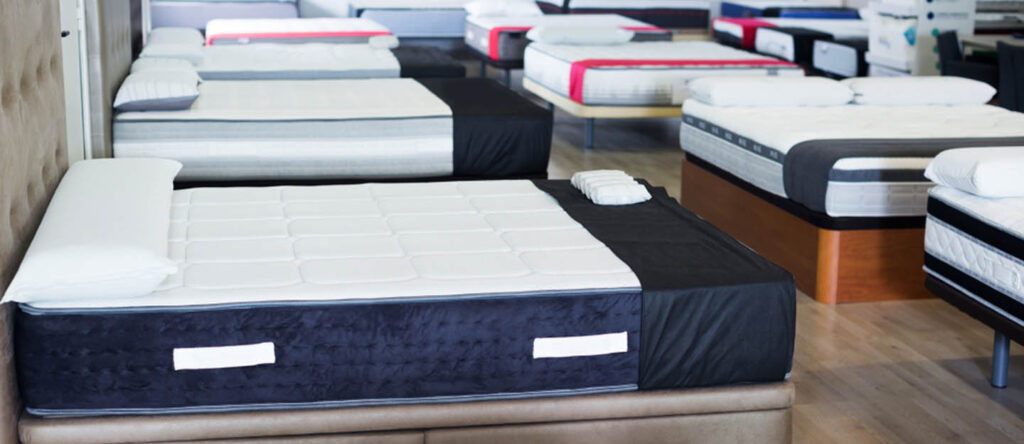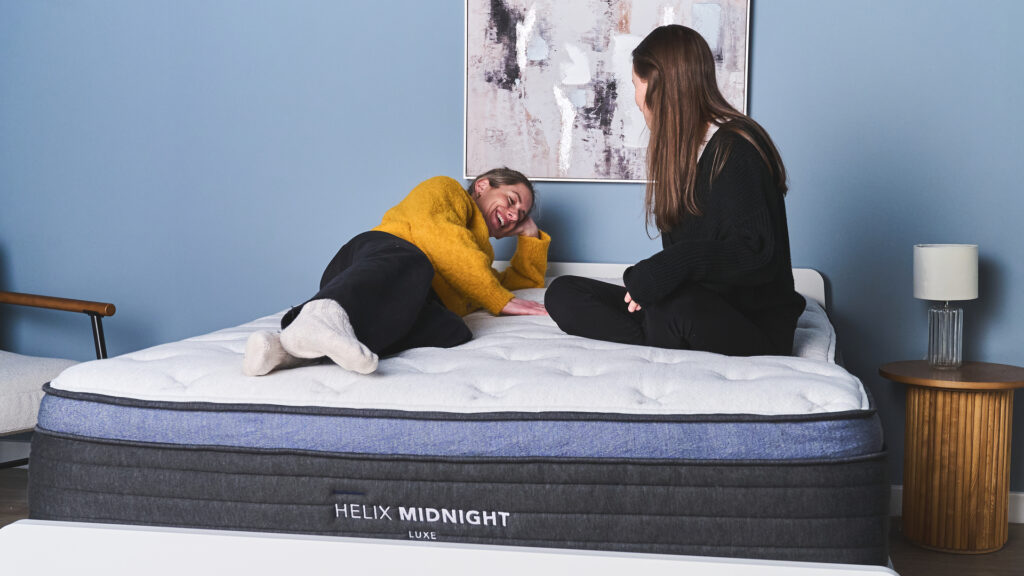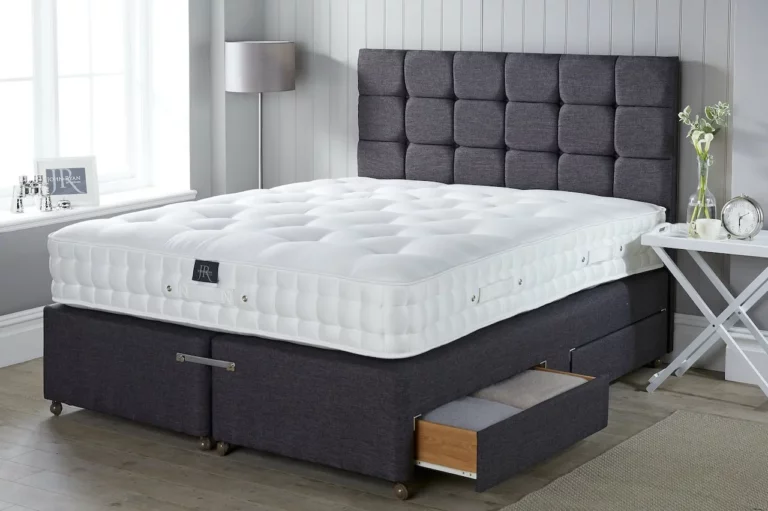In today’s fast-paced world, getting a good night’s sleep has become more important than ever. Not only does quality sleep improve our physical and mental health, but it also enhances our overall well-being. One key factor that can significantly impact the quality of our sleep is the mattress we sleep on. With various options available in the market, choosing the right mattress can seem like a daunting task. However, understanding your sleep needs, exploring different types of mattresses, considering mattress firmness, and taking size and budget factors into account can help you make an informed decision and find the best mattress for a good night’s sleep.
Understanding Your Sleep Needs
Choosing the best king mattress for a good night’s sleep is a personal decision. By understanding your sleep needs, exploring different types of mattresses, considering firmness levels, and taking size and budget factors into account, you can make an informed choice. Remember, a good night’s sleep is essential for your overall well-being, and investing in the right mattress is a step toward achieving that perfect sleep environment.
Sleep needs vary from person to person. Some individuals require more sleep, while others can function well on fewer hours. Additionally, the quality of sleep is equally important as the quantity. Adequate sleep quality allows your body and mind to rejuvenate, promoting optimal functioning throughout the day.

The Importance of Sleep Quality
Quality sleep is crucial for maintaining good physical and mental health. It promotes brain function, memory consolidation, and emotional well-being. On the other hand, poor sleep can lead to mood disturbances, impaired cognitive abilities, weakened immune system, and increased risk of chronic conditions such as obesity, diabetes, and cardiovascular diseases.
Identifying Your Sleep Habits
Before diving into the world of mattresses, take a moment to reflect on your sleep habits. Consider factors such as your preferred sleeping position, any specific sleep issues you may have (such as back pain or sleep apnea), and whether you sleep alone or with a partner. These insights will help you narrow down your options and find a mattress that caters to your specific needs.
Assessing Your Comfort Levels
Comfort is subjective and varies from person to person. While one individual might prefer softer mattresses that offer a plush feel, others may find firmer mattresses more supportive. Assess your comfort preferences by considering factors such as the firmness level you find most comfortable and any specific cushioning or support requirements you may have.
Once you have identified your sleep habits and comfort levels, it’s time to delve deeper into the world of mattresses. Consider the different types of mattresses available on the market, such as innerspring, memory foam, latex, and hybrid mattresses. Each type has its own unique features and benefits, catering to different sleep needs and preferences.
Innerspring mattresses, for example, are known for their traditional coil support system, which provides excellent bounce and responsiveness. These mattresses are a popular choice for individuals who prefer a more traditional feel and enjoy the sensation of sleeping on a mattress with a bit of bounce.
On the other hand, memory foam mattresses are renowned for their ability to contour to your body shape, providing personalized support and pressure relief. This type of mattress is ideal for individuals who experience joint or muscle pain, as it can alleviate pressure points and promote proper spinal alignment.
Latex mattresses, made from natural or synthetic latex, offer a unique combination of comfort and support. They are known for their durability, breathability, and hypoallergenic properties. If you are someone who values eco-friendly materials and wants a mattress that is resistant to dust mites and mold, a latex mattress might be the perfect choice for you.
Hybrid mattresses, as the name suggests, combine the best features of different mattress types. They typically consist of a combination of innerspring coils and foam or latex layers, offering the benefits of both support and comfort. Hybrid mattresses are a great option for those who want the best of both worlds and desire a balanced sleeping experience. Read more about Choosing the right type of mattress for you at https://healthcare.utah.edu/the-scope/health-library/all/2017/09/choosing-right-mattress-you
By considering your sleep habits, comfort levels, and the different types of mattresses available, you can make an informed decision when choosing the perfect mattress for a good night’s sleep. Remember, investing in a high-quality mattress is an investment in your overall well-being and should not be taken lightly.
Exploring Different Types of Mattresses
Once you understand your sleep needs and comfort preferences, it’s time to explore the various types of mattresses available in the market. Each type offers unique features and benefits, so let’s take a closer look at the most common options.
Innerspring Mattresses
Innerspring mattresses are one of the most traditional options. They consist of coil springs that provide support and distribute weight evenly. These mattresses are known for their durability, breathability, and responsiveness, making them suitable for individuals who prefer a bouncy surface.
When it comes to innerspring mattresses, you’ll find a wide range of options. Some have a continuous coil system, where the coils are interconnected, providing strong support throughout the entire mattress. Others have individually wrapped coils, also known as pocketed coils, which offer better motion isolation and contouring to the body’s shape. Additionally, some innerspring mattresses may have a pillow-top or euro-top layer for added comfort and cushioning.
Memory Foam Mattresses
Memory foam mattresses have gained popularity in recent years due to their ability to contour to the shape of the body. They provide excellent pressure relief and motion isolation, making them ideal for individuals who experience joint pain or share a bed with a partner.
When choosing a memory foam mattress, consider the density of the foam. Higher-density foam tends to be more durable and supportive, while lower-density foam offers a softer and more plush feel. Additionally, some memory foam mattresses come with cooling gel-infused foam or open-cell foam technology, which helps regulate temperature and prevent overheating during sleep.
Latex Mattresses
Latex mattresses are crafted from natural or synthetic rubber. They offer a balance between support and comfort. Latex is known for its responsiveness, hypoallergenic properties, and durability. These mattresses are suitable for those who prioritize environmental sustainability and want a bouncy surface without the sinking feeling of memory foam.
When considering a latex mattress, you’ll come across two types: Dunlop and Talalay. Dunlop latex is denser and firmer, providing a more supportive feel. On the other hand, Talalay latex is lighter and softer, offering a plush and luxurious sensation. Both types of latex mattresses are highly durable and resistant to dust mites and mold.
Hybrid Mattresses
Hybrid mattresses combine the best features of innerspring and foam mattresses. They typically consist of a coil support system with several layers of foam or latex on top. Hybrid mattresses provide the benefits of both worlds, offering support, pressure relief, and breathability.
When shopping for a hybrid mattress, pay attention to the coil system used. Some hybrids use pocketed coils for better motion isolation, while others may have a combination of pocketed coils and micro-coils for enhanced contouring and support. The comfort layers on top can vary in thickness and material, so consider your preferences for firmness and cushioning.
Airbed Mattresses
Airbed mattresses allow you to adjust the firmness level according to your comfort preferences. They consist of air chambers that can be inflated or deflated using an electric pump. Airbed mattresses are suitable for individuals who have varying firmness preferences or for couples with different sleep needs.
When choosing an airbed mattress, look for models with adjustable zones, allowing you to customize the firmness level for different parts of the bed. Some airbeds also come with dual chambers, so each person can adjust their side of the mattress independently. Additionally, consider the materials used in the comfort layers on top of the air chambers, as they can affect the overall feel and support of the mattress.
The Role of Mattress Firmness
Once you have explored different types of mattresses, it is crucial to consider the firmness level that suits you best. The right firmness level can significantly influence your sleeping experience and support your body adequately.
But what exactly does mattress firmness entail? Let’s delve deeper into the subject.
Understanding Mattress Firmness Levels
Mattress firmness levels range from soft to firm. Soft mattresses provide a plush feel and sink deeply under your body weight. They envelop you in a cozy embrace, perfect for those who enjoy a cloud-like sleeping experience. On the other end of the spectrum, firm mattresses provide minimal sinkage and maximum support. They offer a sturdy surface that keeps your body aligned throughout the night. And in between, we have medium-firm mattresses, striking a balance between cushioning and support. They provide just the right amount of give without compromising on spinal alignment.
Now that we have a better understanding of the different firmness levels, let’s explore how to match them to your sleep position. To learn about what type of mattress is best for people with low back pain click here.
Matching Firmness to Your Sleep Position
Your sleep position plays a crucial role in determining the ideal mattress firmness for you. Side sleepers often benefit from a softer mattress that contours to their body’s curves, relieving pressure points. The plushness of a soft mattress allows for better cushioning around the shoulders and hips, reducing the risk of waking up with sore joints.
Back sleepers generally require medium-firm support to maintain a neutral spine alignment. A mattress that is too soft may cause the lower back to sink excessively, leading to discomfort and potential back pain. On the other hand, a mattress that is too firm may not provide enough contouring to the natural curves of the body, resulting in a lack of support.
Stomach sleepers, on the other hand, may find firm mattresses more suitable to prevent excessive sinkage and maintain proper alignment. A firm surface helps keep the hips from sinking too deeply, which can strain the lower back over time.

Firmness and Body Weight Considerations
Your body weight can also influence the ideal firmness level for you. Heavier individuals may require a firmer mattress to prevent excessive sinkage and ensure adequate support. A softer mattress may not provide enough pushback, leading to discomfort and a lack of proper spinal alignment. On the other hand, lighter individuals might find a softer mattress more comfortable. The extra give in a softer mattress can provide a gentle cradle-like sensation, promoting a cozy and snug sleep experience.
So, when considering mattress firmness, take into account your sleep position and body weight to find the perfect balance between comfort and support. Remember, a well-suited mattress can make all the difference in achieving a restful night’s sleep.
The Size and Budget Factors
Now that you have a better understanding of your sleep needs, comfort preferences, and mattress types, it’s time to consider the practical aspects – size and budget.
Choosing the Right Mattress Size
Mattresses are available in various sizes, including twin, full, queen, king, and California king. Consider factors such as the size of your room, any space constraints, and whether you sleep alone or with a partner. It is essential to choose a mattress size that provides sufficient space for comfortable sleep.
Setting a Mattress Budget
Setting a budget is essential to avoid overspending or compromising on quality. Determine the amount you are comfortable spending and explore mattresses within that price range. Remember, investing in a high-quality mattress is a long-term investment in your sleep health.
Balancing Quality and Cost
While it is vital to consider your budget, it is equally important to prioritize quality. A high-quality mattress is not only durable but also ensures a comfortable and restful sleep experience. Look for mattresses with reputable brands and positive customer reviews to ensure you are getting the best value for your money.
Related : A Guide to Finding the Perfect King or Queen Mattresses for Your Home




